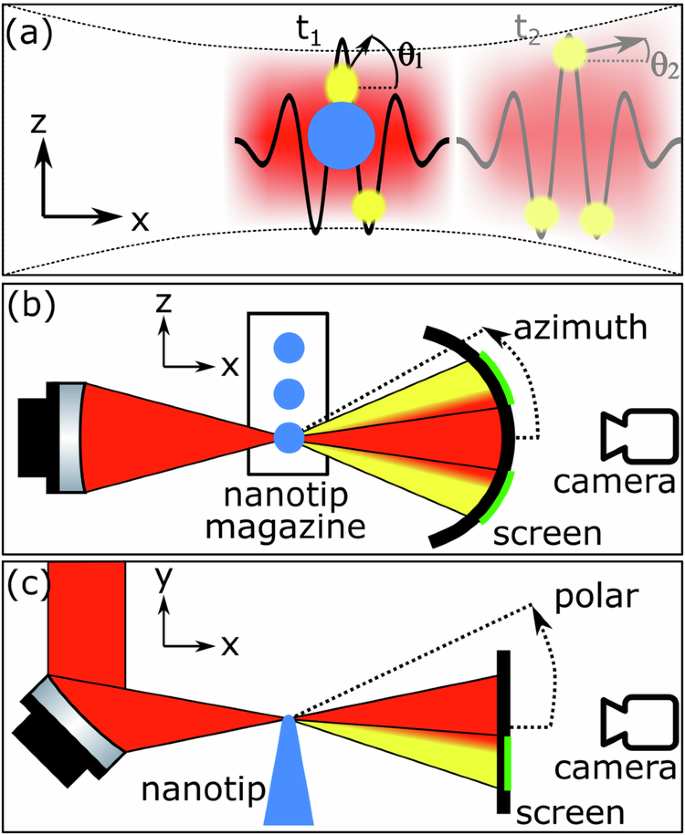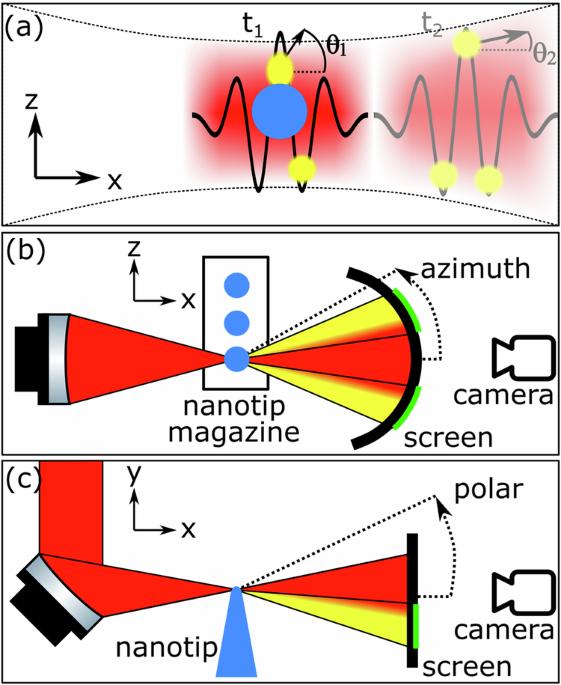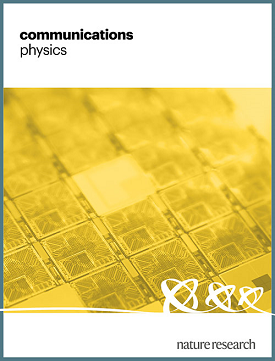真空激光加速时聚焦较松的意外优势
IF 5.4
1区 物理与天体物理
Q1 PHYSICS, MULTIDISCIPLINARY
引用次数: 0
摘要
用强激光场直接加速真空中的电子,为产生高电荷、超短相对论电子束带来了巨大希望。虽然能量增益有望随着更紧密的聚焦而提高,但这并不意味着加速范围的缩小,因为它受到衍射的限制。在此,我们介绍了一项实验研究的结果,该研究将纳米尖端暴露在相对论性几周期激光脉冲下。我们展示了真空激光加速电荷量为 100s pC、能量为 15 MeV 的电子束。尽管峰值强度相差近十倍,但归一化矢量势 a0 为 9.8 和 3.8 的两种不同聚焦几何结构产生的整体电荷和电子能谱具有可比性。我们的结果与三维粒子池模拟结果非常吻合,这表明了去相的重要性。用强激光场加速真空中的电子是一个前景广阔但极具实验挑战性的领域。在这里,作者展示了通过在纳米尖端照射几周期的激光脉冲来加速 100's pC 的 15 MeV 电子,并通过使用不同的聚焦几何结构进一步研究了这一过程,从而得出了意想不到的结果。本文章由计算机程序翻译,如有差异,请以英文原文为准。


Unforeseen advantage of looser focusing in vacuum laser acceleration
Acceleration of electrons in vacuum directly by intense laser fields holds great promise for the generation of high-charge, ultrashort, relativistic electron bunches. While the energy gain is expected to be higher with tighter focusing, this does not account for the reduced acceleration range, which is limited by diffraction. Here, we present the results of an experimental investigation that exposed nanotips to relativistic few-cycle laser pulses. We demonstrate the vacuum laser acceleration of electron beams with 100s pC charge and 15 MeV energy. Two different focusing geometries, with normalized vector potential a0 of 9.8 and 3.8, produced comparable overall charge and electron spectra, despite a factor of almost ten difference in peak intensity. Our results are in good agreement with 3D particle-in-cell simulations, which indicate the importance of dephasing. Accelerating electrons in vacuum by intense laser fields is a promising yet experimentally challenging field. Here, the authors demonstrate acceleration of 100’s of pC of 15 MeV electrons by shining few-cycle laser pulses on nanotips and further investigate the process by using different focusing geometries that leads to unexpected results.
求助全文
通过发布文献求助,成功后即可免费获取论文全文。
去求助
来源期刊

Communications Physics
Physics and Astronomy-General Physics and Astronomy
CiteScore
8.40
自引率
3.60%
发文量
276
审稿时长
13 weeks
期刊介绍:
Communications Physics is an open access journal from Nature Research publishing high-quality research, reviews and commentary in all areas of the physical sciences. Research papers published by the journal represent significant advances bringing new insight to a specialized area of research in physics. We also aim to provide a community forum for issues of importance to all physicists, regardless of sub-discipline.
The scope of the journal covers all areas of experimental, applied, fundamental, and interdisciplinary physical sciences. Primary research published in Communications Physics includes novel experimental results, new techniques or computational methods that may influence the work of others in the sub-discipline. We also consider submissions from adjacent research fields where the central advance of the study is of interest to physicists, for example material sciences, physical chemistry and technologies.
 求助内容:
求助内容: 应助结果提醒方式:
应助结果提醒方式:


